
USA & CANADA (848)
Latest News
Federal budget 2022: More defence funding in wake of Canada’s F-35 about-face
Tuesday, 12 April 2022 00:34 Written by theconversation 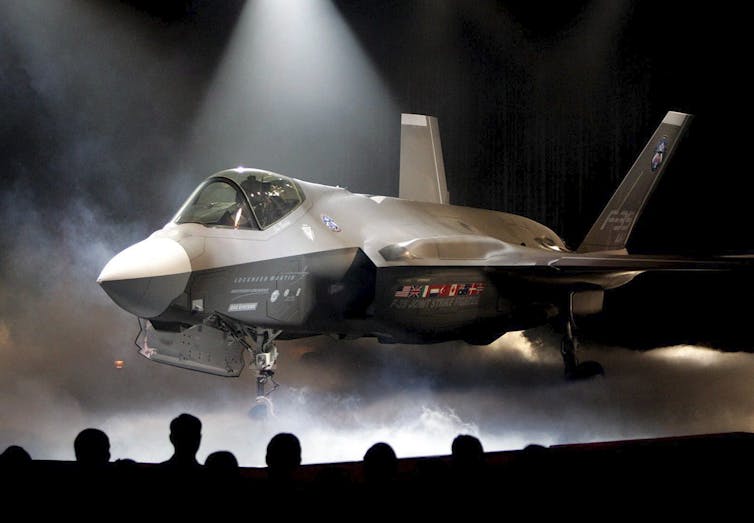
Srdjan Vucetic, L’Université d’Ottawa/University of Ottawa
The Canadian government recently announced its decision to enter negotiations with American aerospace giant Lockheed Martin to buy 88 F-35 fighter jets.
The $19-billion contract is separate from $8 billion in additional funding for defence that Finance Minister Chrystia Freeland unveiled as part of the 2022 federal budget.
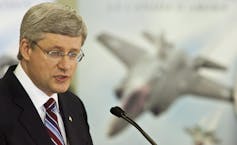
This is the second time Ottawa has chosen the stealthy aircraft. In 2010, the governing Conservatives said the F-35 was the only choice for the Royal Canadian Air Force. The opposition disagreed, and the warplane became an issue in successive federal elections.
This history is what makes the recent announcement so embarrassing for the Liberal government.
Campaigning to unseat the Conservatives in 2015, the Liberals criticized the sole-sourcing of the F-35 as both unfair and misguided. They were wrong.
In 1997, the United States government asked a few of its allies to participate in co-developing and co-producing a fighter jet that would become the F-35, and Canada agreed.
The deal was unusual, but its logic made sense, especially to the Canadian government. Why not work with its biggest economic and security partner while also giving Canadian aerospace firms opportunities to win contracts in what is sometimes referred to as the “the arms deal of the century?”
The current lifetime cost estimate of $1.6 trillion makes it the most expensive weapon system ever built and puts it on equal footing with the entire outstanding U.S. federal student loan debt and President Joe Biden’s Build Back Better plan.
Fighter jet competition
In 2017, the Trudeau government launched what it called an “open and transparent” competition for fighter jets. Designed to rigorously assess bids on elements of capability, cost and economic benefits, this process eventually came down to just two warplanes — the F-35 and Sweden’s Saab Gripen.
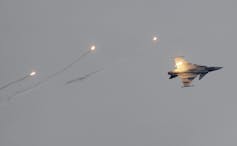
This all but guaranteed the F-35’s win. The last non-American fighter to enter the Royal Canadian Air Force was the Vampire in 1948, manufactured by the British company de Havilland.
As a general rule, Canada’s military wants platforms that offer seamless or advanced interoperability with U.S. forces — not merely compatibility or basic interoperability that would have been the case with the Swedish jet.
The fact that the F-35 is yet to lose a competition is due both to the size of the program and U.S. influence.
The more air forces that buy it — Canada’s decision brings that number to 18 — the lower its operational and other costs. That’s because network effects, as economists call them, generate not only profits for contractors but also international power and influence.
Citing security concerns about the aircraft’s design details, the U.S. government is requesting every F-35 customer remove all 5G equipment made by China’s Huawei from their networks in the coming years. Those failing to comply will likely be removed from the program.
Something similar happened to Turkey in 2019 after its government decided to buy a Russian missile defence system. U.S. officials said that posed risks to the F-35s, including the possibility that Russia could covertly use the system to obtain classified details on the jet.
Strings attached
The strings attached to F-35 purchases have prompted some to call the fighter jet program “America’s One Belt, One Road” — a tongue-in-cheek reference to China’s major foreign policy initiative and the Chinese tendency to strong-arm smaller states into participating. In Canadian politics, however, those strings are largely immaterial because dependence on the U.S. and its military power has long been a huge net benefit.
But what about today, with the ongoing Russian invasion of Ukraine, a rising China and a radicalized U.S. Republican Party?

These developments are troubling and disorienting, but the fundamentals of Canada’s defence are not necessarily shifting dramatically. Whatever happens in Ukraine and in future American elections, the U.S. will almost certainly prioritize the North American homeland, keeping a close eye on both Russia and China.
Accordingly, Ottawa will be expected to add capacity to Canada’s NORAD and NATO commitments, and that means investing in the new aircraft. The new defence budget measures announced by Freeland are in fact designed to strengthen these commitments.
But Trudeau’s topsy-turvy relationship with the F-35 will continue to be mocked. Had the Conservative plan survived the end of the Harper government, RCAF pilots would now be much closer to flying the new jet.
Instead, until at least 2025 — when the first new F-35s are expected to arrive — they will have to rely on an aging CF-18 fighter force, plus the equally aging, used F/A-18s the Liberals acquired in 2019 from Australia as a stop-gap measure.
Some taxpayer money might have been saved, too, had the government bought the F-35s 12 years ago.
Standing on its own
Given the assorted risks and threats Canada could face — including from authoritarian powers, cyber warfare, another pandemic, natural disasters and the accelerating effects of climate change — military procurement is only a small piece of the overall puzzle.
The principal challenge for the federal government is assessing problems in their totality and improving Canada’s own ability to tackle these issues on its own, without being overly affected or reliant on the U.S.
This requires aligning goals and commitments with necessarily limited resources. A far-reaching, comprehensive review of the defence, security, diplomatic and development issues facing Canada would be a step in the right direction.
One way for the Liberals to atone for their contributions to Canada’s fighter jet replacement farce would be to put forth a strategic vision for the country — and do so sooner rather than later.![]()
Srdjan Vucetic, Associate Professor, Graduate School of Public and International Affairs, L’Université d’Ottawa/University of Ottawa
This article is republished from The Conversation under a Creative Commons license. Read the original article.
Ukraine: are reports of Russian troops mutinying and deserting true? It’s happened before
Sunday, 03 April 2022 02:49 Written by theconversationReports have emerged in recent days that Russian troops in Ukraine, stalled in their advance and suffering numerous military setbacks, have sabotaged their own equipment, refused to fight and carry out orders, and even, in one report, run over their own commander.
Nato estimates that as many as 15,000 Russian soldiers may have been killed in less than two months of fighting, or the equivalent of all of the Soviet soldiers killed in nine years in Afghanistan. Morale is reportedly incredibly low. In this situation, the conditions are ideal for the Russian military to implode.
While desertion – or leaving one’s fighting unit – can undermine a military physically and psychologically, defection, which Ukraine is trying to encourage Russian troops to do – or joining the enemies’ forces – can offer the enemy crucial insider intelligence, which may help the Ukrainians gain the upper hand.
This wouldn’t be the first time that Russian or Soviet troops have refused to cooperate with orders in a conflict. During the Russo-Japanese War, Russian troops on the battleship Potemkin famously mutinied in June 1905. Much of the Russian fleet had been destroyed in the Battle of Tsushima the previous month and the Russian navy was left with some of its most inexperienced recruits. Facing deplorable working conditions, including being served rancid meat, 700 sailors mutinied against their own officers on one of the most powerful battleships in the world.
In the second world war, Joseph Stalin tried to ensure troop obedience by implementing a zero-tolerance policy towards surrender. “Order number 227”, issued in July 1942, dictated that any soldier that retreated was to be immediately killed by special units. By some estimates, these units killed as many as 150,000 of their own troops. And yet, no other Allied army had as many defections, with over 1.4 million Soviet POWs choosing to fight alongside German soldiers.
Several decades later, the USSR’s conflict with Afghanistan brought further challenges for the Red Army. The Soviet army was comprised of conscripts who had no training in guerrilla warfare, and felt little identification with their mission. Draft resistance among recruits from the Central Asian and Baltic republics was common, even though draft dodging was a serious crime. Many Soviet soldiers were disillusioned with the atrocities they were forced to commit against innocent civilians.
Desertion was also widespread in Russia’s first conflict with Chechnya (1994-96), where many were sent to fight in one of the harshest conflict environments without ever having fired a shot in training.
Why are there so many desertions in Ukraine?
Defection and desertion in combat is common. Eventually, wartime hardships, poor combat performance and a waning ideological commitment to the cause can spur troops to jump ship. But the Russians are already experiencing low morale and a lack of troop cooperation only a few weeks into the conflict.
Research suggests that morale is especially low in militaries that have been de-professionalised. In spite of reports that Russia’s army was attempting to reform its structure, Russia’s own military reported in 2014 that more than 25% of its personnel could not operate their infantry equipment.
Though the overall budget for the military increased as a result of Putin’s reforms, pay for troops did not. Contract soldiers (who sign up for a period of three years) are paid 200% less than US counterparts, at about US$1,000 (£760) a month, while the conscripts are paid only US$25 a month, and receive little training. All of this contributes to low morale and raises the risk of desertion and defection.
Threat of insubordination
To deal with low troop morale and potential desertions, Russian generals were moved to fight on the front lines to motivate troops that are, at best, indifferent to the conflict. Such little trust in junior officer corps, has led to poor battlefield initiative, and greater communication and command and control problems. As a result of generals having to fight front and centre, at least seven generals have died, the highest death rate of generals in the Russian military since the second world war.
With possibly up to one-fifth of Russia’s original invasion force “no longer combat effective”, Putin has ordered another 134,000 conscripts aged 18-27 who may have little idea what they are getting themselves into. But reports continue to emerge of Russian conscripts feeling as though they have been duped into fighting. They are open to anti-war messages, which Ukraine’s intelligence agencies are understood to be trying to exploit.
Not only has Russia failed to win over the hearts and minds of the Ukrainian people, but it now appears to be struggling to win over the hearts and minds of its own military.![]()
Natasha Lindstaedt, Professor, Department of Government, University of Essex
This article is republished from The Conversation under a Creative Commons license. Read the original article.
Pandemic vaccine passports in Canada: A brief history and potential future
Friday, 25 March 2022 21:09 Written by theconversation 
Kumanan Wilson, L’Université d’Ottawa/University of Ottawa
The simple idea of tracking and requiring proof of vaccination created some of the most disruptive protests in Canadian history, and the declaration of a national emergency.
How did this happen? It’s complicated.
It’s easy to forget that, at the outset of the pandemic, the initial lockdowns were extremely harsh and had a severe impact on economies and people’s lives. In attempts to mitigate these effects while protecting the health of populations, the idea of natural immunity passports was considered.
There were many scientific questions about this approach, including how to determine if someone was infected and how long immunity would last. And there were also important ethical questions to consider, such as creating incentives to be infected and creating a two-tier society.
This idea didn’t move forward for several reasons, not the least of which was because so few people had evidence of infection, for this approach to have any value.
Vaccine-induced immunity
Flash forward to the publication of the Phase 3 studies for the mRNA vaccines. The results were better than many expected: 95 per cent protection against symptomatic infection. The idea of proof of immunity was revisited, but this time it was vaccine-induced immunity.
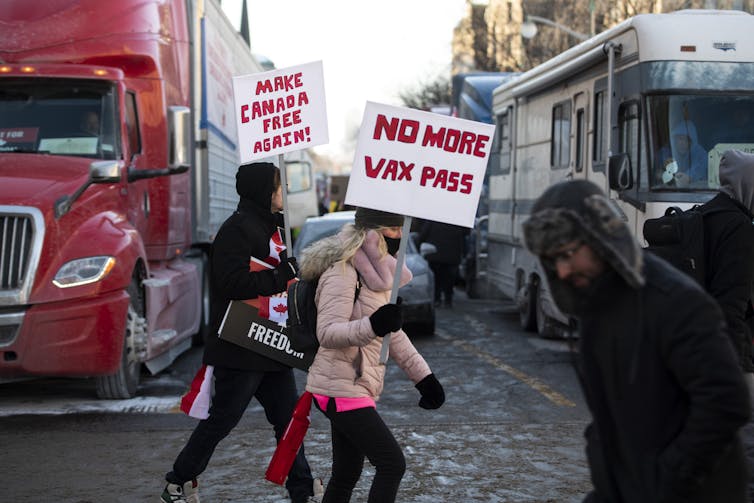
However, the argument against it now was that if the vaccine was that effective, individuals wouldn’t need others to be vaccinated, if they were vaccinated themselves. Also, based on the transmission rate of the original strain of the virus, the herd immunity threshold was in the 60-70 per cent range, which was potentially achievable through voluntary programs.
The Delta variant changed this calculus and became the poster child for vaccine passports. Vaccine effectiveness dropped to the 70 per cent range against infection, and the herd immunity threshold increased to 90 per cent range, a target that would be challenging without mandates of some sort. Furthermore, the Delta variant was causing serious illness in broader segments of the population and hospitals. In particular, intensive care units were being overwhelmed.
Reluctant Conservative governments had no choice but to acquiesce to vaccine passports. When a federal election was called, this was a key platform issue of the Liberal party.
As a physician innovator in digital immunization records with expertise in health law, policy and ethics, I understood the challenges in balancing public health benefits with individuals rights and freedoms.
At that time, my thoughts were that the reason to have mandates was primarily for settings in which the virus could spread easily. During the Delta wave, stories of vulnerable essential workers contracting the virus in warehouses and meat packing plants and spreading it to their families who fell seriously ill, were terrible.
In my mind, you simply could not allow individuals to go to these high-risk settings unvaccinated. However, the broader application of the policy also resulted in increased vaccination rates, and helped control the Delta wave.
The spread of Omicron
The Omicron wave changed the story again. Omicron was milder, but more infectious. But more importantly, two doses of vaccine provided minimal protection against infection, although it did protect against serious illness and death.
The rationale for vaccine passports was now different. Herd immunity through vaccination alone was unattainable. If the goal was to prevent transmission to others, any mandate should be three vaccines which provide 60-70 per cent protection against infection. However, if the goal is to protect against serious illness then two doses provided reasonable protection, although this would be improved with a booster.
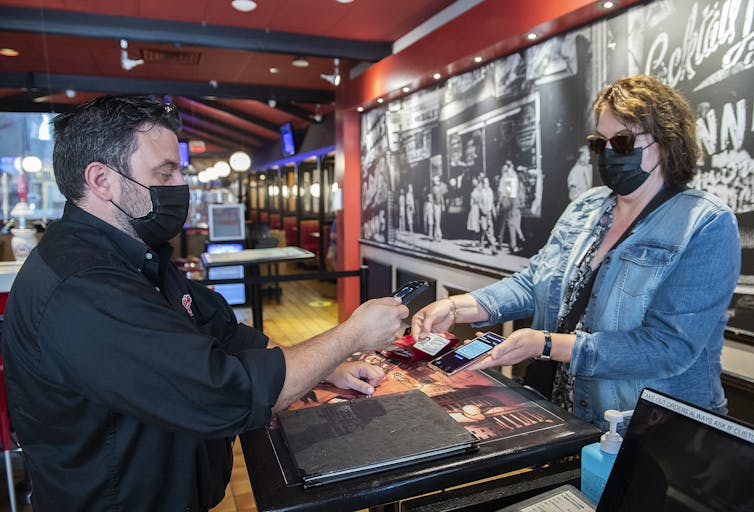
And here is where it gets complicated. People not wishing to be vaccinated could argue that an unvaccinated person was no more likely to become infected by Omicron than a two-dose vaccinated person.
Unfortunately, our fragile health-care system complicates this decision. Individuals getting seriously ill place strains on hospitals, health-care workers and have spillover effects, including the cancellation of medical procedures. And, as we saw with the “mild” Omicron wave, this triggers a lockdown which affects all of us.
Future policy
So where do we go from here? I think we will end on a middle ground for a potentially endemic virus. This could mean a policy already in use for health-care workers and the influenza vaccine: You don’t neccesarily have to be vaccinated, but if there are cases at work or at school, you and your child will be asked to stay home for your own protection. This may vary based on the risk to your demographic. Proof of previous infection may be also considered in these policies.
Vaccine passports did work. They increased vaccination rates, saved countless lives and reduced the duration of lockdowns, preserving parts of the economy.
But, as we have seen, these policies are highly divisive and are impacted by the changing science of the pandemic, which will require more targeted and adaptable approaches moving forward. And importantly, the messaging around these policies will need to change from penalizing the sub-optimally vaccinated to protecting them.![]()
Kumanan Wilson, Professor of Medicine, physician, scientist, Ottawa Hospital Research Institute, L’Université d’Ottawa/University of Ottawa
This article is republished from The Conversation under a Creative Commons license. Read the original article.
Is Canada’s welcome to fleeing Ukrainians a new era of refugee policy?
Friday, 11 March 2022 11:17 Written by theconversation 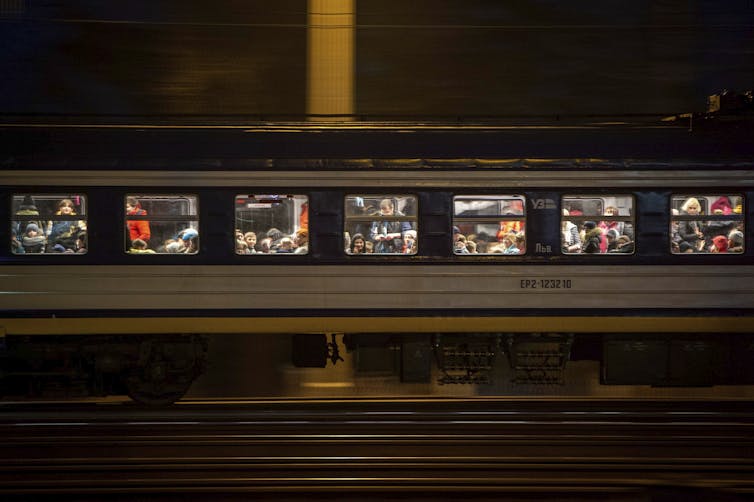
Adèle Garnier, Université Laval; Jamie Chai Yun Liew, L’Université d’Ottawa/University of Ottawa, and Shauna Labman, University of Winnipeg
In less than two weeks, more than two million people have fled Ukraine following the Russian invasion. Many in the Ukrainian-Canadian community have had to flee before as refugees and Canada now boasts the world’s second-largest Ukrainian diaspora.
Canada is known to be welcoming to refugees — to those from Vietnam in the 1970s, for example, and from Syria and Afghanistan more recently — and is seen as a global refugee resettlement leader. But Canada’s response to Ukrainians fleeing the war is different than past policy.
Special admission provisions
When the invasion on Ukraine escalated on Feb. 24, 2022, Justin Trudeau’s government introduced special admission policies for Ukrainian nationals.
The Canada-Ukraine Authorization for Emergency Travel allows an unlimited number of Ukrainians fleeing the war to apply to stay in Canada for two years. Canada is also prioritizing applications of Ukrainian nationals reuniting with family in Canada, extending visas and permits of Ukrainians already in Canada and offering open study and work permits.
Canadian-Ukrainians and refugee advocates have welcomed the measures yet also raised concerns.
First, emergency travel applicants still need a visa, whereas several countries in Europe have suspended visa requirements for Ukrainians. Canada is ramping up identification procedures, including biometrics, in central European countries receiving Ukrainian refugees, and is waiving fees for travel documents.
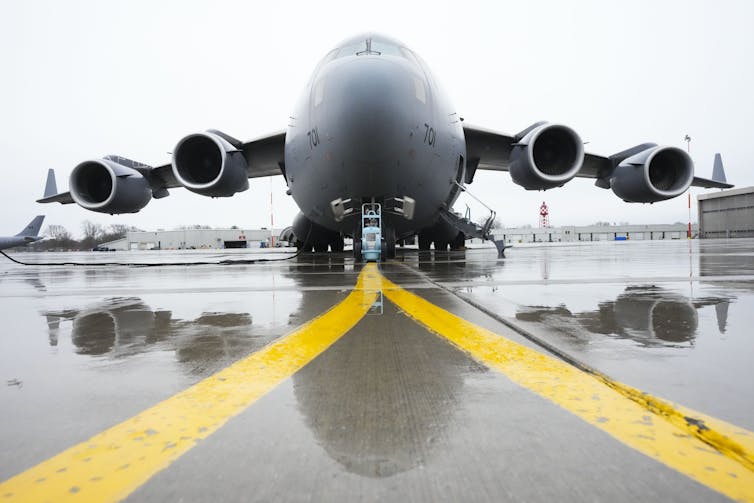
Immigration, Refugee and Citizenship Canada (IRCC) has long been plagued by processing delays. The new measures have raised concerns that they might have an impact on other refugees awaiting resettlement to Canada, in particular those from Afghanistan.
Immigration Minister Sean Fraser has stated: “We can do more than one thing at a time,” and says delays in the admission of Afghan refugees is a logistical challenge on the ground rather than a processing problem.
IRCC has, however, pointed to processing delays to justify technology acquisitions and purchases to speed up decision-making on the admission of refugees. Yet the use of artificial intelligence to deal with immigration applications raises issues of discrimination and racism.
Temporary protection
The Canada-Ukraine Authorization for Emergency Travel also differs from Canada’s previous resettlement efforts since it offers only temporary protection.
Similarly, the European Union, for the first time, triggered its Temporary Protection Directive for people fleeing Ukraine, which also only provides temporary protection.
The EU response was designed for “mass influx” scenarios. Protection is offered for one year, with the possibility to extend for two more years. Access to the asylum system in EU countries is still available to those who receive temporary protection.
Canada grants temporary protection for “at least” two years. But there are lingering questions on the durability of the Canadian response for those fleeing Ukraine. What happens once temporary protection measures ends is an open question.
While some may benefit from the new permanent residency pathway through family sponsorship, not all emergency travel applicants have family in Canada.
As we saw for those who fled Hong Kong to Canada by obtaining a visa, this was just the first hurdle to overcome. Canada is offering the same option to those fleeing Ukraine. Obtaining refugee protection or accessing other immigration pathways at a later date, however, is another obstacle with no guarantee of success.
It remains to be seen whether Ukrainians who wish to settle in Canada permanently will be required to apply for asylum, and if many will find other permanent residence pathways such as post-graduate and employer-sponsored visas.

Who’s left out
Both the Canadian and EU responses raise questions about the differential treatment of people on the move. Canada’s response only applies to Ukrainian nationals. The EU’s measure includes third-country nationals fleeing the war as long as they’ve been legally living in Ukraine. Both responses leave undocumented persons without protection.
In 2019, the International Organization for Migration noted up to 60,900 undocumented people were in Ukraine, mostly from South Asia and Africa. The lack of legal protection options and reported instances of racism and discrimination means not everyone is able to access protection.
The movement of people from Ukraine will continue indefinitely. It’s still early days, and Canada’s response will undoubtedly evolve.
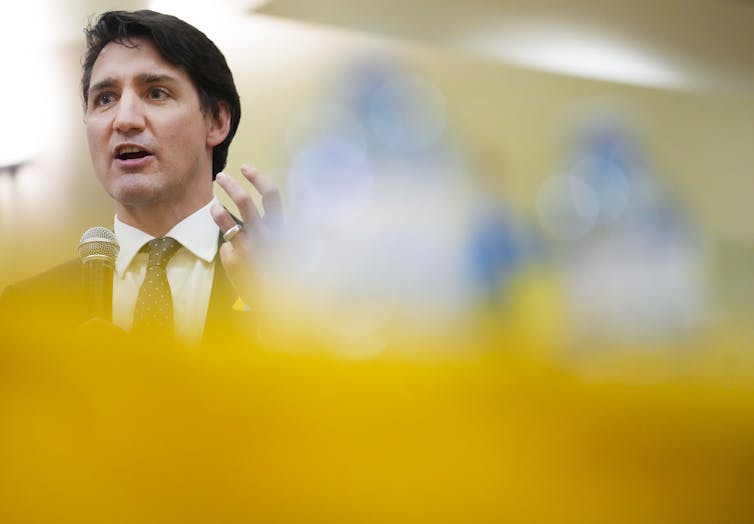
But it should be more inclusive, addressing non-Ukrainians fleeing the country as well. Further, temporary protection ensures Ukrainians are brought to safety faster. But will this kind of response become the preferred method in the future for all refugees? Are more permanent solutions forthcoming?
Temporary measures impose a burden on refugees to apply for numerous legal processes with no guarantee of permanent residence. As refugee advocates, we’re weary of providing the limited rights of temporary protection instead of putting in place robust asylum and resettlement programs.![]()
Adèle Garnier, Professeure adjointe, Département de géographie, Université Laval; Jamie Chai Yun Liew, Director of the Institute of Feminist and Gender Studies and Associate Professor, Faculty of Law at the University of Ottawa, L’Université d’Ottawa/University of Ottawa, and Shauna Labman, Associate Professor of Human Rights, Global College, University of Winnipeg
This article is republished from The Conversation under a Creative Commons license. Read the original article.
Popular News
War: Ukraine to receive anti-tank weapons from Canada amid Russia’s invasion
Tuesday, 01 March 2022 12:09 Written by dailypost.ngCanada will send anti-tank weapons and upgraded ammunition to support Ukraine amid global rage over Russia’s invasion.
Canadian Prime Minister, Justin Trudeau disclosed this at a news conference on Monday.
“Yesterday, we announced that we would be sending new shipments of military supplies, including body armour, helmets, gas masks and night-vision goggles.
“Today, we’re announcing that we will be supplying Ukraine with anti-tank weapons systems and upgraded ammunition,” said Trudeau.
Trudeau added that the Canadian government plans to prohibit all imports of Russian crude oil.
This is in addition to earlier shipments of lethal and non-lethal equipment to Ukraine.
The Canadian government is also carrying out a series of sanctions on Russia, including closing off Canadian airspace to Russian planes and prohibiting Canadian financial institutions from engaging in any transaction with the Russian Central Bank.
Russian war: US offers major support to Ukraine as war enters third day
Saturday, 26 February 2022 09:29 Written by dailypostU.S President, Joe Biden instructed State Department to release up to $350 million in security assistance to Ukraine, according to CNN.
Russian President Vladimir Putin government began invasion of neighbouring Ukraine on Thursday.
Biden instructed Secretary of State, Antony Blinken to release up to $350 million in immediate support to security and defense.
CNN says that this was contained in a new memo released by the White House late Friday.
This is the third drawdown of money; previous orders have been for $60 million and $250 million, putting the total over the last year at over a billion dollars, according to an administration official.
The State Department is expected to issue its own statement with more details shortly.
This release comes after a 40-minute call between Biden and Ukrainian President Volodymyr Zelensky earlier Friday, during which they discussed “concrete defense assistance.”
Family Day imagery neglects family caregivers’ care work; it needs to be valued
Monday, 21 February 2022 14:56 Written by theconversation 
Janet Fast, University of Alberta and Jacquie Eales, University of Alberta
Family Day often evokes images of families enjoying the outdoors together, playing board games or sharing a meal. But these images neglect the hidden care that nearly eight million caregivers across Canada provide.
One in four Canadians aged 15+ provide care to family, friends and neighbours with chronic health problems, physical or mental disabilities or functional limitations.
The ongoing nature of this care work comes with both rewards and penalties. Caring for family and friends helps people give back, feel close and can give people a sense of competence and purpose. At the same time, many caregivers have to deal with their own poor health, strained social connections and out-of-pocket expenses.
These negative outcomes threaten the sustainability of caregivers’ care work and affects their well-being. Family caregiving is often ignored because it is unpaid, undervalued, hidden in the privacy of homes and care facilities and done primarily by women.
As a family economist, and a family caregiving researcher, (and family caregivers ourselves) we know this work isn’t free. Whether it’s personal care, housekeeping, managing appointments and services, or even home-based kidney dialysis, there’s nothing “free” about a family caregiver’s care work. And the COVID-19 pandemic has made that even more obvious.
Outbreaks in long-term care, work-from home mandates, job losses and shortages of formal home care services have complicated and intensified family caregivers’ responsibilities, isolation and stress.
The pandemic has also increased caregivers’ financial burden and reduced their ability to get much-needed outside support.
Despite this care crisis, family caregivers have carried on as best they can. Their collective efforts — 5.7 billion hours of family care work annually — help sustain the public continuing care systems that are increasingly dependent on them and reduce the burden on taxpayers.
$97.1 billion to replace families’ care work
Using data from Statistics Canada’s most recent (2018) national survey on caregiving and care receiving , we found that families play a central role in meeting Canadians’ care needs.
Unpaid family caregivers in Canada spent an extraordinary 5.7 billion hours annually supporting others. It would take 2.8 million full-time paid care workers to do this work instead. Multiply that by the national median hourly wage of $17 for home support workers and you get a staggering $97.1 billion as the estimated cost to replace Canadian families’ care work.
To fully understand the magnitude of caregivers’ contributions to Canadian society, consider that $97.1 billion represents 32.2 per cent of national expenditures on formal health care, and more than three times the national expenditures on continuing care services like home, community and long-term care.
Without the ongoing commitment and labour of family caregivers, the Canadian continuing care sector would collapse.
This $97.1 billion value also represents 4.2 per cent of gross domestic product (GDP). That’s double the contributions of industries such as agriculture, utilities and hospitality, and 67 per cent of the contribution of the health-care and social services sectors combined.
Policymakers rely on GDP as a universal measure of a country’s social and economic performance and standard of living that guides their policy decisions. Yet, because GDP omits the value of unpaid care work, it is an incomplete measure leading to flawed public policy.
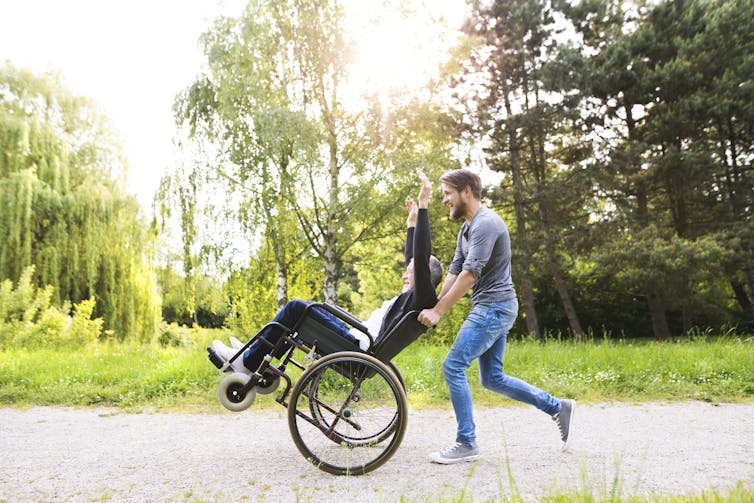
Key component of the care economy
Many social injustices arise from the invisibility and devaluation of families’ care work. Caregivers who are women, have lower incomes, are in their peak earning years and contribute more than their share.
Bringing family care into debates about the overall economy and accounting for caregivers’ contributions is sparking conversations about recognizing the care economy as a key component and growth engine for Canadian society. We define the care economy as paid and unpaid care work that supports people who are care-dependent because of their chronic health conditions or disabilities, or because of their young age.
Documenting the enormous volume and monetary value of family members’ care work establishes it as an indispensable social and economic activity. Yet it is often left out of the public policy agenda.
It’s time to complete the picture and recognize public expenditures on supports for family caregivers as social investments in the well-being of individuals, families and communities. It’s time for a National Caregiver Strategy and a Canada that recognizes, respects and supports the integral role of family caregivers in society.
Our study on the value of unpaid family care work is a collaborative project of Janet Fast, Jacquie Eales, Norah Keating and Choong Kim from the University of Alberta and Karen Duncan from the University of Manitoba.![]()
Janet Fast, Professor and Co-Director, Research on Aging, Policies and Practice, University of Alberta and Jacquie Eales, Research Manager, Research on Aging Policies and Practice, University of Alberta
This article is republished from The Conversation under a Creative Commons license. Read the original article.
One-third of Canadian seniors who rent or pay a mortgage are struggling to pay their bills
Monday, 21 February 2022 14:53 Written by theconversation 
Alex Bierman, University of Calgary and Yeonjung Lee, University of Calgary
Seniors are being forced out of their homes due to rent increases. They’re having trouble finding new, affordable accommodations. And the rent for senior housing can be more than a pension pays.
Our recent survey shows that these aren’t isolated incidents. Many Canadian seniors who rent or pay a mortgage are having trouble making ends meet.
In September 2021, we worked with the Angus Reid Forum to survey over 4,000 people. We asked people from all across Canada between the ages of 65 and 85 about their recent financial experiences — whether they had trouble paying for bills, necessities and whether their debt had increased.
And our results were consistent and disturbing.
Cutting back
Many seniors are struggling to pay bills. Over a third of older adults who rent or pay a mortgage reported trouble paying bills, while only about 12 per cent of outright homeowners struggled with their bills.
And they’re not just struggling with rent and mortgage. Seniors are also having trouble affording basic necessities, like food. We asked people about eating less than they thought they should because of a lack of money — over one-quarter of renters and almost one-fifth of people paying mortgages reported having eaten less. Meanwhile, less than 10 per cent of Canadian homeowners also reported cutting back on food.
Medical care is another big issue. With Canada’s publicly funded healthcare system, it may seem like seniors shouldn’t have trouble affording medical care. But many still do, and paying for a home is a major risk factor.
We asked people whether they delayed or skipped medical care or prescriptions because of the costs. About 13 per cent of outright-homeowners told us they had. Almost double for those paying a mortgage and it was even worse for people paying rent. About one-third of senior renters had trouble affording medical care or prescriptions.
The finances of seniors who rent or pay a mortgage also got worse during the pandemic. Over 30 per cent reported increased debt in the past year. While only about 12 per cent of outright-homeowners reported greater debts.
Reigning in rent
The financial plight of renters and mortgage-holders is likely to become an even more pressing issue. Larger groups of people are entering their senior years, while more seniors are being burdened by debt than in the past.
Some provinces are trying to address these issues by reigning in rent increases. Provinces like British Columbia, Ontario, Nova Scotia, New Brunswick and Prince Edward Island (PEI) restrict how much landlords can raise rent — these limits are usually between one and two per cent.
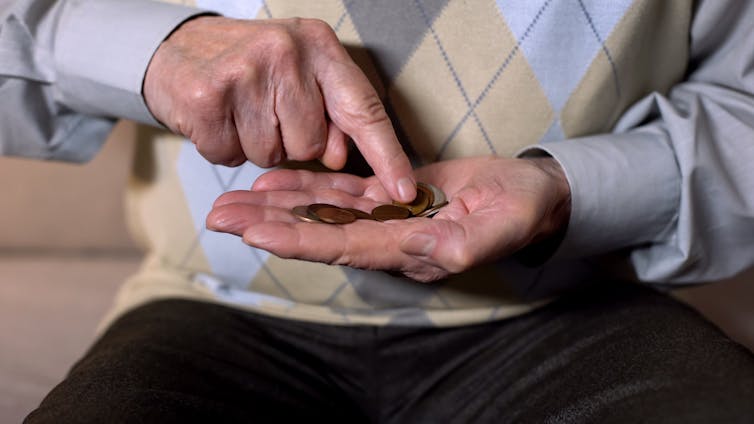
But rent control isn’t enough. When finances are stretched so thin, even small increases in housing costs may be a serious threat to financial stability. Rent control also won’t help people who pay a mortgage and mortgage-holders are subject to fluctuations in interest rates that can increase required payments.
Building more housing is also unlikely to be a solution because supply of housing is only one factor in housing prices. Also, landlords still need to take in enough rent to cover the costs of building and operating rental housing — that limits how much rent can decrease, even if new rentals are built.
This is why greater directed subsidies to assist financially vulnerable seniors may be a better solution. Financial supports can contribute to helping older adults avoid having to choose between keeping a roof over their heads or food on the table.
Financial supports
The federal government is taking steps to assist financially vulnerable seniors. Supports for those aged 75 and over are increasing by 10 per cent in July 2022. But this change won’t help those younger than 75.
Although government support for low-income seniors has increased in recent years, it clearly isn’t enough. And financial shortfalls are forcing many seniors to make tough decisions when it comes to being able to afford a home or other needs.
Canadians need to take steps to better address the financial insecurity of seniors. Otherwise, Canada may encounter a growing tide of desperate seniors in the near future.![]()
Alex Bierman, Associate Professor, Department of Sociology, University of Calgary and Yeonjung Lee, Associate Professor, Faculty of Social Work, University of Calgary
This article is republished from The Conversation under a Creative Commons license. Read the original article.





